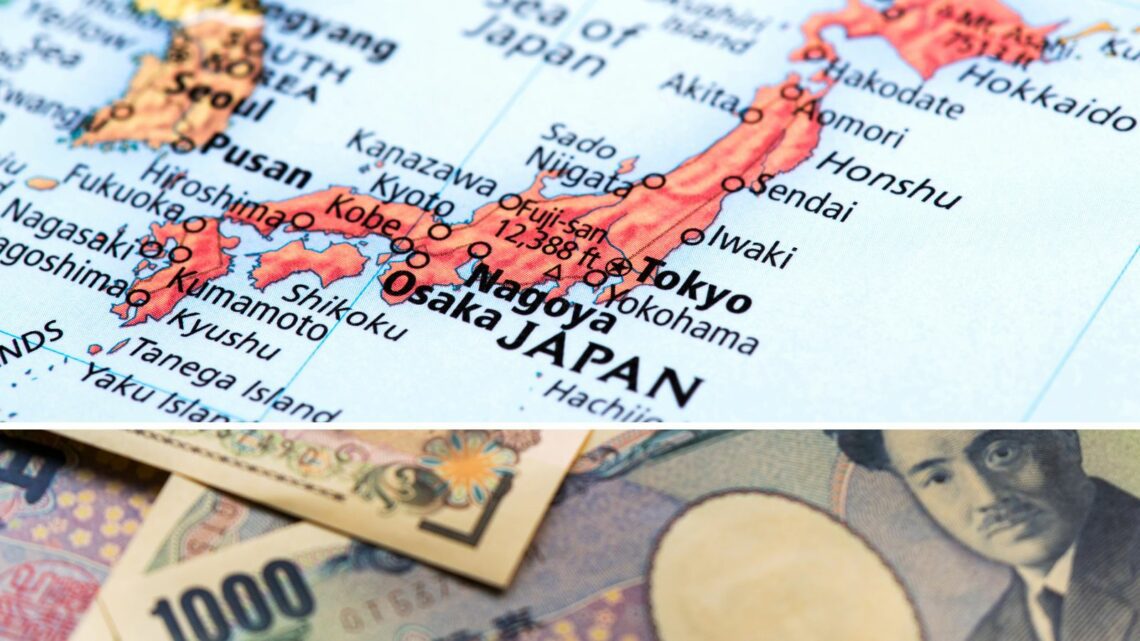
Japan Budget Travel Guide (2024)
Japan has a reputation for being an expensive destination, but actually it can be very affordable!
I’ve visited Japan twice for a total of nearly six months and spent only about $48 USD/day using these very tips in this Japan budget travel guide.
The key to traveling Japan on a budget is to travel SLOW, to take advantage of cheap transit and to find discounted meals and souvenirs.
Keep reading to learn how to save money on Accommodation, Transit, Food and Tourism while traveling in Japan.
This post contains affiliate links. If you click on a link and buy something, I get a small percentage at no extra cost to you. Your support helps keep this blog running— thank you! Read full disclosure here.
Best Travel Resources
- 🛕Klook for tour discounts and attraction tickets
- 📱Airalo for eSIMs around the world
- 🛌Hostelworld for budget stays
- 🚙DiscoverCars for international car rentals
- 👩💻ExpressVPN to stay safe while browsing the web
- 🧑⚕️VisitorsCoverage for trip insurance
Japan Budget Accommodation Guide
There are three main ways to save money on accommodation:
- Stay for a month or more and book a short-term apartment or room.
- Do a work exchange where you volunteer in exchange for food/room.
- Stay in capsule hotels and hostels.
Using one or all of these (depending on how long you’re staying in Japan) will save you BIG MONEY over time.
1. Stay for a month or more.
This is what I did to save money during my multi-month trip in Japan. It DOES mean you have to pick a good, central location where you can do day trips, but the upside is that you get to settle into a “local life” for a bit.
The two main ways to find short-term accommodation is by something like AirBNB or VRBO, or by booking a room in a sharehouse.
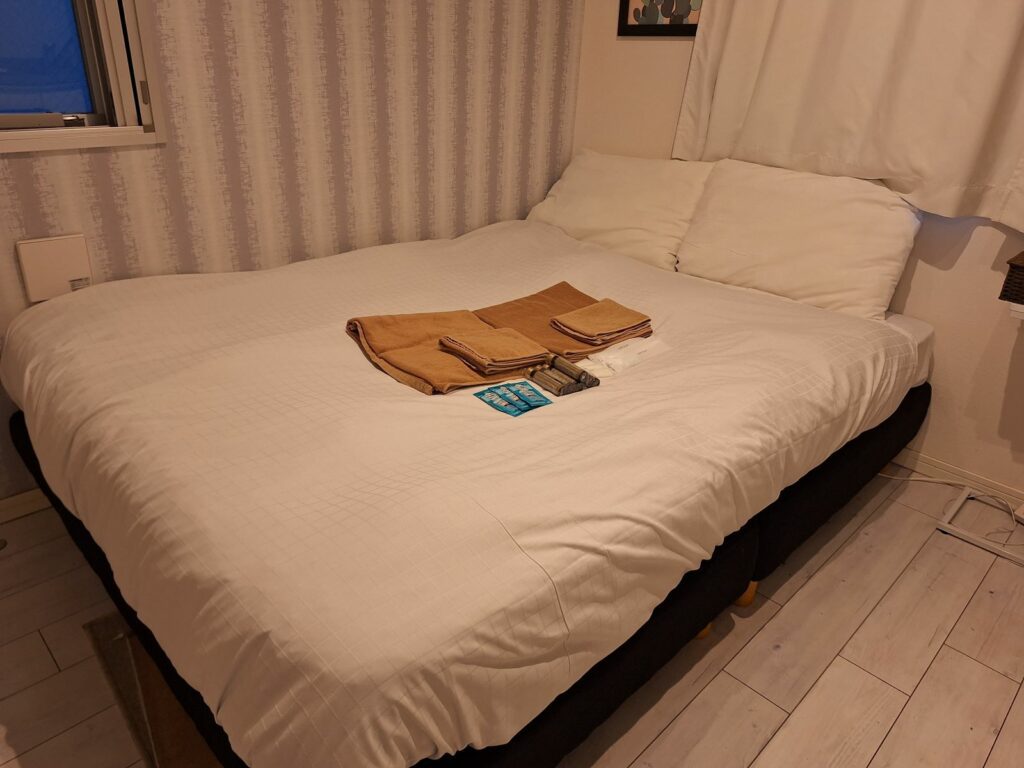

AirBNBs in Japan are like everywhere else: you can search for specific amenities and locations you want to stay in, and then book something. Usually, if you book for 28 days or longer you’ll get a discount of 10% or more! The downside is that the cheaper AirBNBs tend to be smaller, much smaller than you may be used to. The upside is that you’re paying everything at once, with no extra fees.
I stayed in an AirBNB in Tokyo for a month and paid only $877 USD! If you stay outside the major cities in a suburb or small neighboring city, it can be even cheaper. For instance, I’ve stayed 20 minutes outside of Osaka in an AirBNB for under $500 USD/month.
Sharehouses are like dorms where people rent rooms in an apartment and get access to a shared kitchen and bathroom. They can be BIG building, with 40+ rooms, or you can find a smaller one with 4 or 5 rooms.
The upsides to a sharehouse is: they’re foreigner-friendly, you don’t have to pay key money or a deposit like with a normal apartment, and you get to be part of a community. They’re also cheaper than renting your own apartment, overall.
The downsides to a sharehouse is: you’re sharing space with strangers, which can be dicey if you have bad roommates, you can only book a room a few weeks ahead of time (bad for people who like to plan) and the buildings themselves can be rundown or nasty.
Some sharehouse companies that have good reviews from travelers include: Sakura House and Oak House. Oak House also does events for guests to meetup!
A good place to find short-term stays is Hostelworld. They have hostels (including some with private rooms!), guesthouses and short-term sharehouse beds in dorms! Also, if you book through them, you’ll get access to a group chat for the city you’re staying in, which is a great way to meet people while traveling.
2. Work exchange (pet sitting, Workaway)
I don’t have experience with this myself yet, but I do have some friends who did work exchanges in hostels or farms in Japan. They worked for about 20 hours a week and got a free room and at least one meal a day in exchange!
If you’re interested in this option, check out Workaway for volunteering gigs. I like this platform because it’s easy to search for specific destinations and types of volunteering opportunities, and you can put down that you’re going to specific places and hosts can contact you if they think you’d be a good match.
Sign up for Workaway using my link and get 30 days free!
You could also try pet sitting or house sitting, where you watch over someone’s pets/house in exchange for a place to stay. I have LOTS of friends who use this option to travel the world and stay places for free! If you love pets, it’s a particularly good opportunity to live like a local and also hang out with dogs, cats, birds, or even farm animals.
Trusted Housesitters is one of the biggest housesitting directories with listings all around the world. If you sign up using my link you’ll get 25% off!
3. Stay in capsule hotels and hostels.
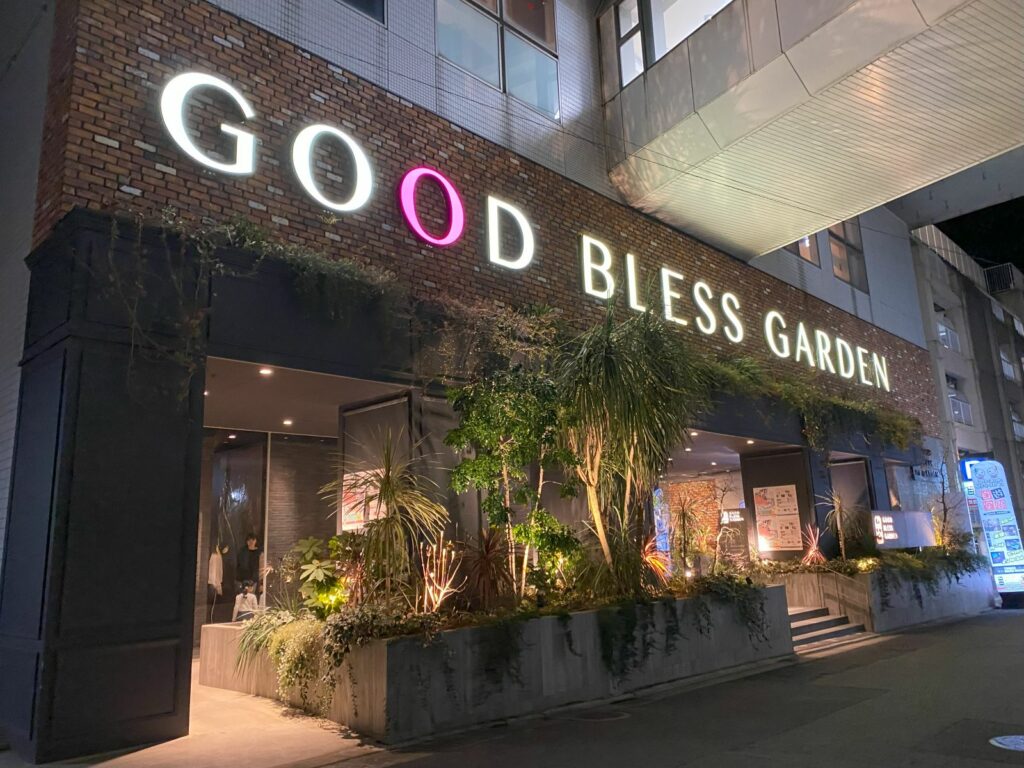
Hotels can be expensive, so if you want to travel fast to different cities but still save money, you should aim for staying in hostels and capsule hotels.
Hostels are shared accommodation: you book a bed in a dorm and have shared bathrooms, kitchens, and communal areas. They’re great ways to meet other travelers, and often hostels will have free tours or events for guests as well! If you’ve never stayed in a hostel before and don’t know where to look, I have some recommendations here for Tokyo, Nagoya and Osaka.
Capsule hotels are similar to hostels in that you stay in a shared dorm space and use shared bathrooms, but they’re aimed more at business travelers than backpackers. They have a lot more amenities, including free pajamas! And they usually don’t do events or tours. If you’re looking for a slightly more upscale place compared to a hostel, then a capsule hotel might be a good option for you.
I’ve stayed in great capsule hotels in Hiroshima and Yonago for an average $30 USD/night; much more affordable than a regular hotel!
Besides Hostelworld, you can also find hostels listed on Booking.com and Agoda!
Japan Budget Transit Guide
The next biggest expense tends to be Transit. Train tickets, especially Shinkansen (bullet train) tickets, can be very expensive! A ticket from Tokyo to Osaka costs about $100 USD one way for a 2.5 hour trip.
On the other hand, an intercity bus from Tokyo to Osaka can cost only about $30 USD and takes about 7 hours. If you have the extra time, you can save a LOT of money by taking buses over trains!

There’s several big bus companies that go between cities, but my favorite is the JR buses (run by the train company!). You can check for routes and book tickets using 12Go, or go to the bus station and book in-person.
Check out my guide for booking highway buses in Japan here!
Another option for traveling long distances is using discount airlines. There’s a few operating within Japan and if you book far enough ahead of time, you can snag cheap tickets! For instance, a flight from Tokyo to Osaka can be as low as $35 USD for a 1.5 hour flight!
And finally, if you really want to take the train, try buying discount train passes. However, DON’T buy the JR Pass unless you’re planning on using the train every day to go long distances. It’s actually much cheaper to buy a pass for a smaller area or a specific train line.
For instance, when I was staying in Fukuoka I got a 3 day train pass for the north Kyushu region on Klook for about $75 USD. Compared to the normal train ticket prices, I saved about $15 by getting the pass!
Klook is a great resource for finding discounted transit, tours and experiences for all over Asia.
If you’re traveling with a group, renting a car might be useful– especially if you want to go into more rural areas. I don’t like driving, myself, so I have no experience renting cars in Japan, but some friends who travel with their kids have done it and say it’s great because they can go on their own schedule.
Japan Budget Food Guide
Food doesn’t have to be super expensive in Japan! If you make reservations at 3 star restaurants every day and eat Kobe beef steak every chance you get, then yes, it will be pricey. And honestly, if you’re a foodie then you’re probably resigned to spending money on food anyway.
But if you’re not picky about food and just want to try some local meals at good prices, then you can definitely do that!
First, go to local restaurants. These may not have English menus and you may not see a bunch of tourists. To find them, either ask around for recommendations or search Tabelog for specific places.
Tip: A good budget chain restaurant with an English menu is Sukiya, which has beef bowls and Japanese breakfasts for under $5 USD!
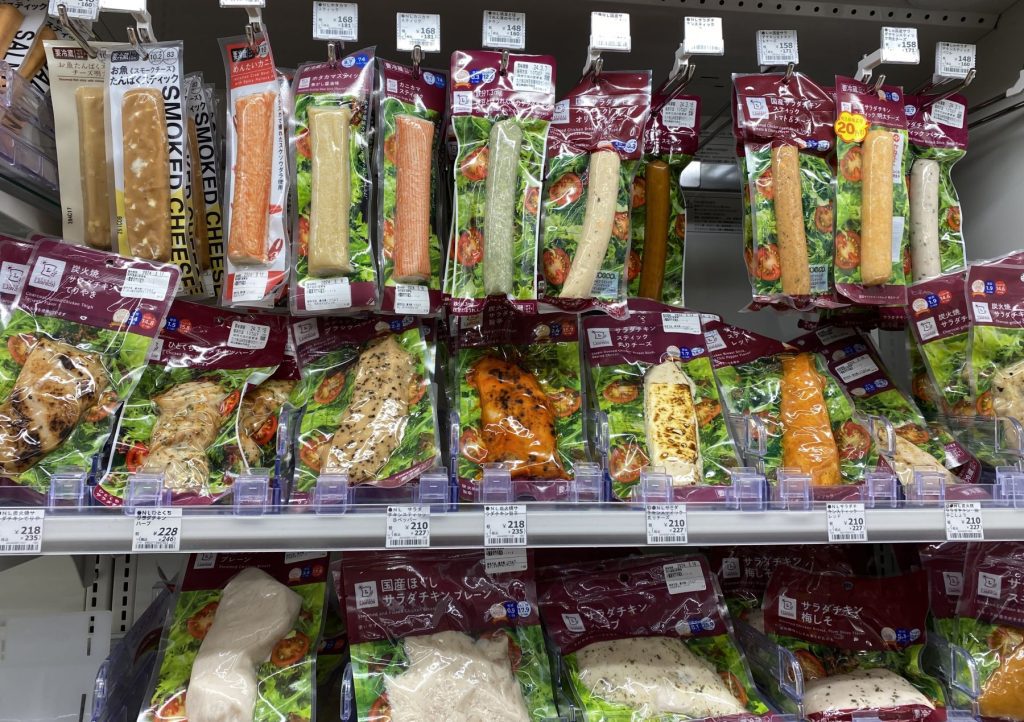
Second, go to convenience stores. Japanese convenience stores (Family Mart, 7-11, Lawson, Minimart and more) have a wide range of food for good prices, from sandwiches to soups to pasta to rice balls! Here’s some prices for Tokyo convenience stores to give you an idea of what’s available.
Third, if you have an apartment or a hostel with a kitchen, go shopping for groceries! Shopping in grocery stores is a great way to see what local people are eating and try some new things that you may not have at home, at good prices! Grocery stores also have much of the same things as the convenience stores, but slightly cheaper!
You can also snag clearance deals at grocery stores in the evenings! Ready-made food as well as discounted veg and fruits will start showing up around 5:00 pm and later.
Short on time and want to try a lot of food? Book a food tour and get shown the best of Japan by a local!
Japan Budget Tourism Guide

Luckily, most major tourist things in Japan are pretty cheap! Even Tokyo DisneySea is relatively cheap compared to the US Disney Resort ticket prices, at under $100 USD for a one day ticket on the off season.
To get the best deals, check websites like Klook for discounted entrance fees, tours, transit, and more! This also works to get around websites that don’t accept foreign credit cards (like Tokyo Disney Resorts).
Be sure to also visit tourist information centers for info on local events, festivals or tours. Websites like Tokyo Cheapo are good for specific cities as well. I like that they also list things like flea markets and concerts.
Cheap souvenirs
This is another area where things can get expensive– if you want a Japanese knife or sword, then you’re going to be spending lots of money. However! If you just want some cute stickers, postcards, magnets, tote bags, etc.: go shopping at 100 yen stores (like Daiso), thrift stores, and flea markets! Not only will you find some amazing things, but it’ll be way more unique than a random whatever from a tourist souvenir store.

Also! If you want to buy a vintage kimono, you can get them at GREAT prices at flea markets! The one I visited in Nagoya had piles and PILES of vintage kimonos for a mere ¥500!
For things like skin care, KitKats and kooky souvenir shirts, check Don Quijote stores. They’re huge and have a lot of stuff!
Another fun souvenir that’s FREE is collecting souvenir stamps from train stations and tourist places! Check out where to find eki stamps and how to collect them.
SIM cards and internet
I guess it’s still a popular tip to get a pocket wifi thing, but honestly I think that’s just leftover from when people didn’t have eSIMs and wifi wasn’t as abundant. Also, now that people tend to have unlocked phones more than not, it’s easy to switch SIMs to a local company for the duration of a trip.
🌟 I recommend grabbing the Moshi Moshi eSIM from Airalo for your trip to Japan. New users, use promo code NEWTOAIRALO15 to save 15%. Existing users, user promo code AIRALOESIM10 to save 10%!
If you’re traveling by yourself or with one other person, it’s cheaper to get an eSIM from Airalo and just use that. Almost everywhere has free wifi, and the eSIM works great for maps and Whatsapp messages.
Otherwise, you can get a SIM card from the airport when you arrive; generally one month is $40 USD or so for 30GB or more of data. Not bad!
Thanks for reading! I hope this Japan budget travel guide helps give you some ideas on how to save money during your trip.
Save to Pinterest
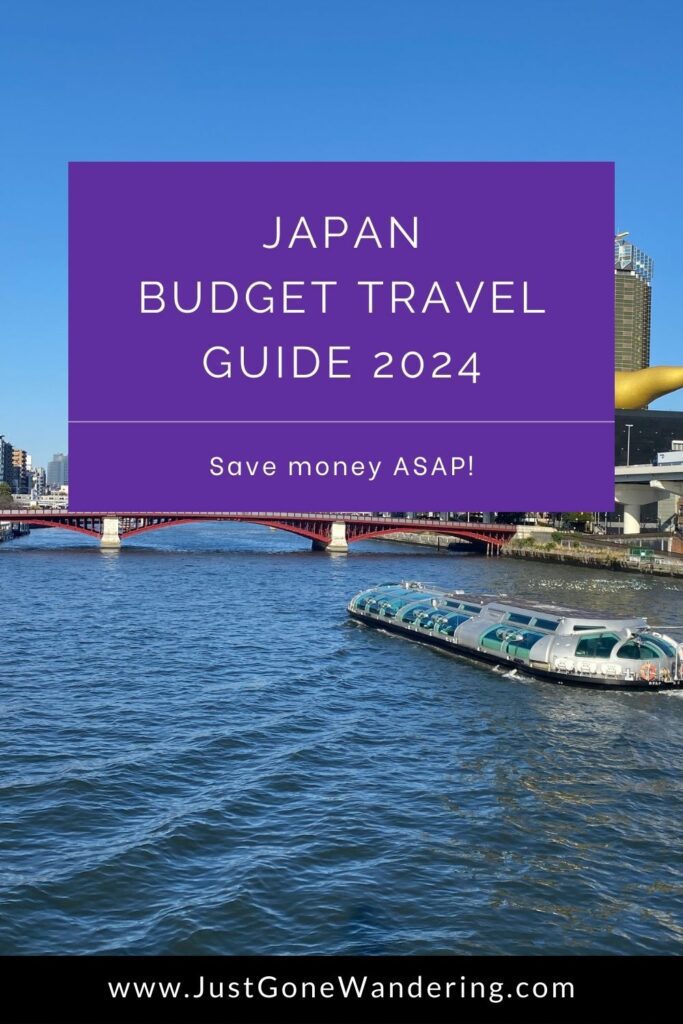
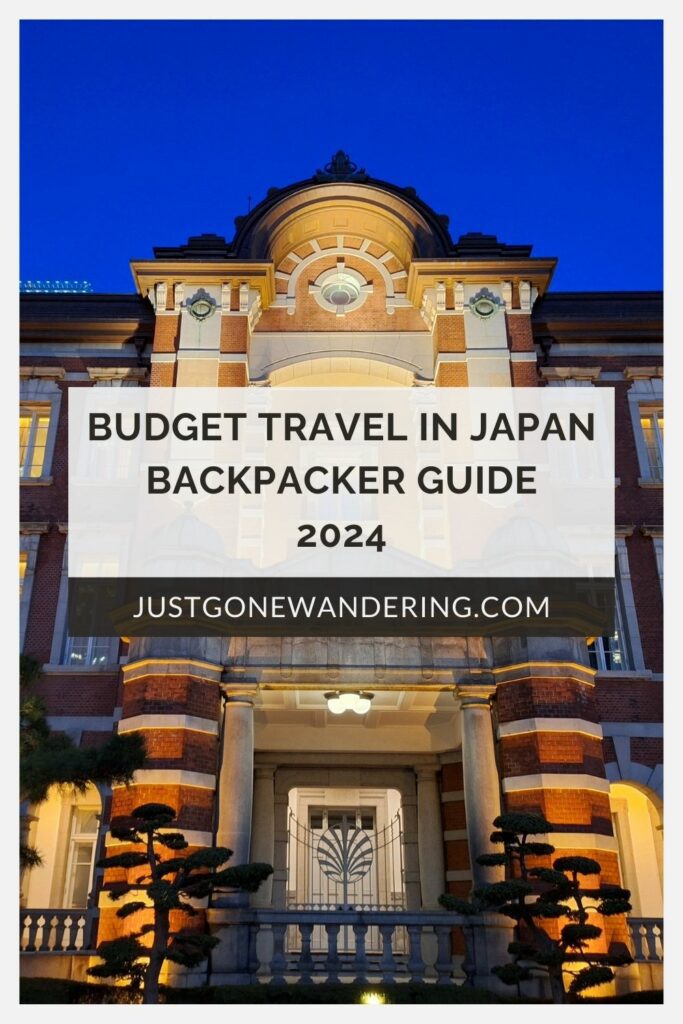
Explore More
Posts about Japan:
- One month in Tokyo | March 2024 Travel Budget Breakdown
- One month outside of Osaka, Japan | April 2024 Travel Budget Breakdown
- Travel Japan for Cheap on Highway Buses
- Tokyo Convenience Store Food Prices 2024
- Japan Grocery Store Food Prices 2024
- Vending machine drinks in Japan
- Exploring Japan — all posts about Japan on this blog live here!
Destination Travel Guides
Best Travel Resources
- 🛕Klook for tour discounts and attraction tickets
- 📱Airalo for eSIMs around the world
- 🛌Hostelworld for budget stays
- 🚙DiscoverCars for international car rentals
- 👩💻ExpressVPN to stay safe while browsing the web
- 🧑⚕️VisitorsCoverage for trip insurance
Japan Tours & Activities




